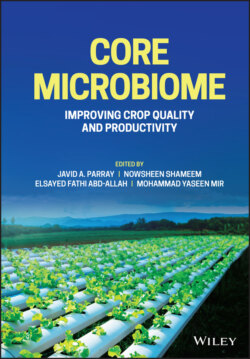Читать книгу Core Microbiome - Группа авторов - Страница 22
2.2.2.4 Induced Systemic Resistance (ISR)
ОглавлениеIn the theory of plant immune system, the initial defense system activated by plants is pathogen-associated molecular patterns (PAMP), PAMP-triggered immunity (PTI), in which pattern recognition receptors (PRRs) recognize bacterial flagella or fungal chitin. The subsequent defense after initial defense is effector-triggered immunity (ETI), in which the nucleotide binding leucine-rich repeat (NB-LRR) receptor recognizes effector molecules of a pathogen. These two lines of defense often trigger induced resistance in unexposed parts of the plant by pathogens, and the mechanism is termed “systemic acquired resistance” (SAR) [29].
Plant-microorganism are evolved to gather according to different taxa and soil types but nowadays focus has been on functional microbiota, which provides fitness to halobiont. Induced systematic resistance (ISR) is a well-studied mechanism and first described for Pseudomonas in which certain beneficial bacteria, viz., Pseudomonas, Bacillus, and Serratia strains, and nonpathogenic fungi, viz., Trichoderma, F. oxysporum, and Piriformospora isolated strains, and the symbiotic mycorrhiza species in the rhizosphere prime immune system in the unexposed parts of plants to fight against infectious agents [30]. Seed-grown maize plant exposed to Trichoderma harzianum strain T22 had minimized symptoms of anthracnose, which was explained by root colonization by Trichoderma strain-ISR [31].
